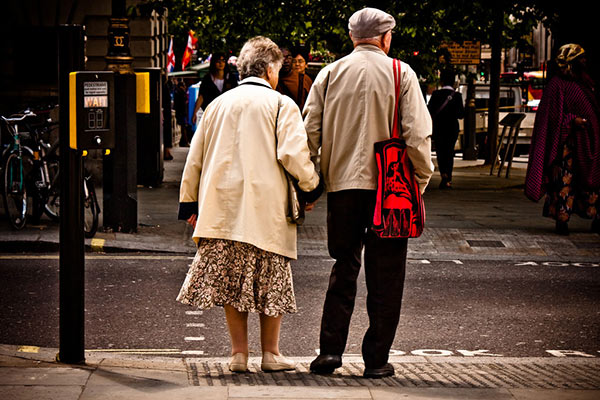Co-motion: mobility and well-being

This project investigated the links between mobility and wellbeing amongst older people. The work included a longitudinal study of older people in York, Hexham and Leeds who have experienced transitions affecting mobility and wellbeing.
Context
We all experience major changes in our lives, particularly as we grow older, and these changes can make a difference to mobility and well-being. The ‘Co-Motion Consortium’ secured £1.2M funding from the EPSRC, ESRC and AHRC for a three year ‘Design for Wellbeing’ project investigating the links between mobility and wellbeing in older people.
Aims and objectives
The project aimed to create a step-change in mobility and wellbeing in later life. The work included a longitudinal study of older people in York, Hexham and Leeds who have experienced transitions affecting mobility and wellbeing which led into intensive co-design workshops with older people and local and national stakeholders.
The project had five distinctive, equally ranked objectives:
1. Transitions and time; We explored mobility and wellbeing for older people going through critical but common life transitions such as losing a driving license, losing sight, losing a partner, becoming a carer or starting to use a mobility scooter.
2. Consensus and contradiction; We investigated and addressed the variation and contradictions in needs of different groups of older people, and between different built environment agendas and guidance.
3. Participation; We worked very closely with a relatively large and diverse group of older people and local stakeholders in the built environment, ageing and wellbeing. Older people and stakeholders acted not only as informants but as co-operators and co-designers.
4. Complements and alternatives; In proposing interventions to promote mobility and wellbeing, we focused on complements or alternatives to physical design or redesign of the built environment.
5. Impact; In addition to concepts and knowledge the project also provided a suite of tested models and prototypes: crowdsourcing and participatory GIS for mobility information gathering and analysis; deliberative methods in identifying consensus and priorities; tested prototype technologies to provide alternatives and complements to changes to the built environment; Initial evidence on the impact of prototype technologies on mobility and wellbeing.
Findings and outcomes
Across all elements of the Co-Motion project, the participants described hugely diverse experiences of being mobile as part of their daily lives. However, virtually all emphasised the importance of being out and about. The following points do not reflect the needs of all the people who took part in our study, but highlight some of the key areas of concern that were identified in the study areas.
- Many public and private buildings were considered as inaccessible to people with a diverse range of conditions or impairments (for example, absence of ramps, heavy doors that need to be opened manually; poor circulation space, or lack of places to rest). The physical inaccessibility of some public spaces meant that some people were effectively unable to participate in some events and experiences (an example given in the research was not being able to participate in jury service because insufficient attention had been paid to how a disabled person could attend)
- There is a lack of toilet facilities that are open to the general public, but especially inaccessible toilets suitable for people who use mobility aids or need assistance.
- Design solutions often too narrowly focused on wheelchair friendly design with less awareness among policy makers or members of the public of the needs of people with less visible or obvious impairment (hearing loss being one example).
- Meeting the needs of one group through design features can cause issues for others. Physical modifications intended to help key groups (such as tactile surfaces) or to moderate behaviour (for example speed humps on roads) were noted as causing difficulties for some respondents with physical impairments or conditions.
Project activities and publications
Related links

- Dr Steve Cinderby (Co-Investigator)
Principal Investigator
- Dr Mark Bevan (School for Business and Society, University of York)
Co-Investigators
- Dr Steve Cinderby (Stockholm Environment Institute York)
- Prof Helen Petrie (Computer Science, Univeristy of York)
- Dr Christopher Power (Computer Science, University of York)
- Professor Rebecca Tunstall (School for Business and Society, University of York)
- Dr Katia Attuyer (School for Business and Society, University of York)
- Dr Karen Lesley Croucher (School for Business and Society, University of York)
Engineering and Physical Sciences Research Council (EPSRC)
- University of Leeds
- University of Newcastle
- Northumbria University
Related links
